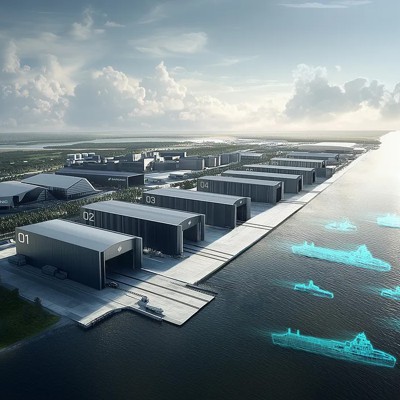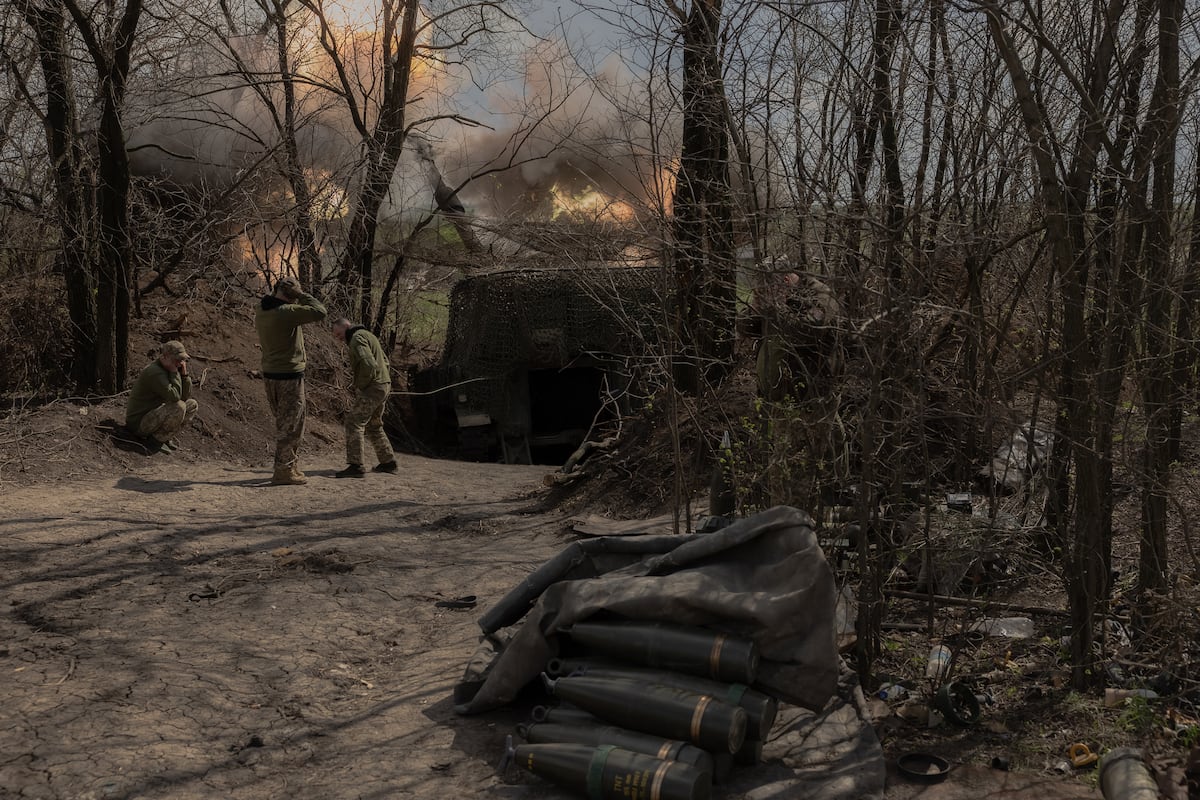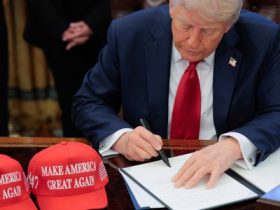Robot-shipbuilder Saronic wants to use the $600 million from its latest funding round to build a shipyard for medium and large uncrewed surface vessels—even as the Navy reconsiders its investment in large USVs and naval shipbuilding faces a workforce shortage.
Detailed plans for the manufacturing facility, dubbed Port Alpha, are still in the works, but company officials say they’ll be ready to produce even before the Pentagon ultimately decides what it wants.
“We’re going to expand our product lines. We’re going to take those same principles of mission-centric design, of affordability and scalability and the most advanced software in the world and we’re going to move that into autonomous ships and autonomous shipbuilding for the Navy to build that future autonomous fleet that the Navy needs,” Dino Mavrookas, Saronic’s CEO and co-founder, told reporters Tuesday.
Tech investor Elad Gil led Saronic’s Series C round of funding, which brought its total funding to about $850 in nearly three years. Other investors include General Catalyst, a16z, Caffeinated Capital, and 8VC.
The company is looking for a location for Port Alpha as it irons out designs for the medium and large USVs. While Mavrookas was reluctant to provide a timeline for completion, the goal is to build the facility “well within five years.”
“We’re going to invest billions of dollars into the defense industrial race and bring shipbuilding back to this country again in a way that we have not seen since World War II,” Mavrookas said.
Saronic has been building smaller USVs, including the six-foot long Spyglass, 14-foot Cutlass, and 24-foot Corsair which can travel up to 1,000 nautical miles, in Austin, Texas. The company is also planning to expand that production capacity after acquiring a 420,000 sq. ft. facility to complement existing facilities in Austin, said Rob Lehman, co-founder and chief commercial officer.
The chief of naval operations has repeatedly named autonomous vessels as a key part of the Navy’s hybrid fleet needed for future warfare. But while there’s a clear signal the Navy wants autonomous vessels, it’s not quite clear what size.
For example, Rear Adm. William Daly, director of surface warfare, has expressed skepticism of the Navy’s need for large autonomous ships, instead favoring a more easily produced, medium-sized vessel. Members of Congress have also called for rethinking large USV production plans.
Despite the Navy still figuring out its specific requirements, Lehman said building a facility that can manufacture larger vessels is key to getting ahead of operational needs.
Saronic has to “walk the balance between what’s in the J-books and the budget documents as the requirements process is executed, but also [take] into account things that have not worked their way through the process yet,” Lehman said. “And we’re confident and convicted that our insights into what the capability gaps are and how we can address them is going to provide the right capabilities to the Navy at the time that they need them.”
That move to build for production before the military asks for the capability is part of a growing trend by private companies that have the capital to do it, said Bryan Clark, senior fellow and director for the Hudson Institute’s Center for Defense Concepts and Technology.
“Normally, [companies] like an HII or Austal, they’re going to wait for the Navy to start ordering ships in large numbers before they build the manufacturing facility that would create them,” Clark said. “When you look at what the Navy needs and its hybrid fleet, it’s going to need hundreds of uncrewed surface vehicles like these, and they will not be able to get them from the small-boat yards that are building them today.”
But Saronic, and other newer defense tech companies with private investment are moving toward fast production even if the government hasn’t yet made up its mind on what it wants to buy. For drones, Anduril is doing something similar with autonomous aircraft with a recently announced facility in Columbus, Ohio.
But building a shipyard has its challenges, including finding and training people to do the work and building the right facility.
“I think that’s what Saronic is looking to do: they want to build these larger, uncrewed surface vessels, the same way you build trucks and cars, which I think helps with the workforce. Because now you don’t need to have necessarily the specialized skills that you would need for a shipyard,” Clark said. “If you build a manufacturing plant, you need people that can operate the machines that are building the ships or building the boats in this case, so it’s a lot easier to get those people and train them up.”
Moreover, because these are much smaller vessels than crewed combatant ships, there’s more flexibility on location, which could translate into a more available workforce that could stimulate the local economy, he said.
Besides workforce, flexibility in manufacturing could be one of the key challenges Saronic might face. Mavrookas said there’s no “upward limit on what we’re going to build,” but that will likely be a key factor for future production needs.
“The question for Saronic will be: how big a range of USVs can you build at this facility? Because if you get too big, then it’s not an assembly line anymore,” Clark said. “And so can their facility handle everything from their tiny boat…up to a 300-ton USV?”
Read the full article here








Leave a Reply